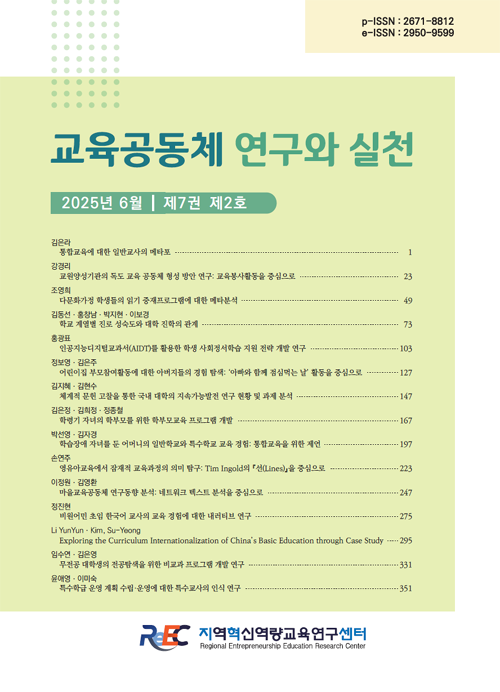대학 교양 교육과정 편성의 제도적 재구조화 논의: H 종합대학 사례를 중심으로
Discussion on the Institutional Restructuring of General Education Curriculum Organization: A Case Study of H University
- 부산대학교 지역혁신역량교육연구센터
- 교육공동체연구와실천
- 제7권 제3호
-
2025.09181 - 204 (24 pages)
-
DOI : 10.23108/decrc.2025.7.3.181
- 9

연구목적: 본 연구는 H 대학교 교양 교육과정의편성·운영 현황을 진단하고, 교양과목의 구조적쟁점을 유형화하여 재구조화 방향을 제시하는 데 있다. 연구방법: 서울 소재 종합대학인 H 대학교를 단일 사례로 설정하고, 2024~2025학년도 개설 교양과목 전수와 편제표, 수강편람, 강의계획서 등을 수집해 문서 분석을 실시하였다. 편제 구조, 학점 구성, 영역별 분포, 과목 성격과전공 연계성, 교양 적합성을 중심으로 검토하였다. 연구결과: H 대학교 교양 교육과정은 복잡한편제와 높은 필수 비중으로 학생 선택권이 제한되었고, 자연과학·수리 영역 부족과 교양 취지에맞지 않는 과목이 확인되었다. 교양과목은 전공 침투형, 구조 잔존형, 공백 보완형, 실용 수단화형으로 유형화되었다. 결론: 교양교육은 단순 배제가 아닌 기능별 이동 및 재배치를 중심으로재구성되어야 하며, 학생 선택권 확대, 교양·전공·학문기초 간 관계 재정립, 영역 간 균형 조정이요구된다.
Purpose: This study aims to analyze the organization of H University’s general education curriculum, identify structural issues, and propose directions for restructuring. Method: Using H University in Seoul as a single case, all general education courses in 2024-2025, along with curriculum tables, catalogs, and syllabi, were examined through document analysis. The analysis focused on curriculum structure, credit requirements, subject distribution, academic characteristics, major relevance, and appropriateness. Results: The curriculum was overly complex, with excessive required credits limiting choice, insufficient natural science and mathematics offerings, and courses misaligned with general education goals. Courses were grouped into four types: major-infiltrated, structurally residual, gap-filling, and functionally instrumental. Conclusion: General education should be reorganized through functional relocation and reallocation, ensuring broader student choice, disciplinary balance, and clearer relationships among general education, majors, and academic foundations.
Ⅰ. 서 론
Ⅱ. 이론적 배경
Ⅲ. 연구 방법
Ⅳ. 연구 결과
Ⅴ. 결론 및 논의
참고문헌
(0)
(0)